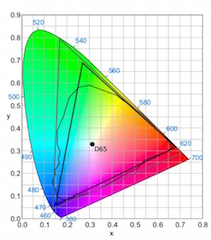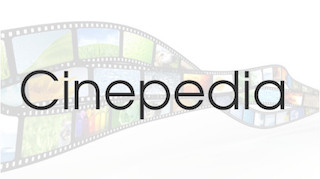Digital cinema technology is defined by a collection of documents developed by many different organizations. No one organization defines it all, and in one case, the organization no longer exists. To address that situation, industry veteran Michael Karagosian has launched the website Cinepedia. His goal is to provide a single source of information about cinema technology. Among his many accomplishments Karagosian represented the technology interests of the National Association of Theatre Owners for eleven years during the digital cinema transition and is co-chair of the ASC Technology Subcommittee on Next Generation Cinema Display. I recently spoke with him about Cinepedia.
Digital Cinema Report: How did the idea for Cinepedia come to you?
 Michael Karagosian: Education for digital cinema just kept popping up for me. In earlier years, I would get asked by clients to walk their teams through the workflow and mechanisms of the format. In 2009, I was invited in speak at the Media Salles Digitraining seminar in Europe, and I continued to speak at the event for the next eight years. It was through Media Salles where the need for education really struck home. Invariably speakers would be asked to talk about the latest. This was a fast-moving area at the time, and so the latest could get quite deep and be completely irrelevant to the needs of cinema operators. As I watched colleagues deliver their talks, it was clear that much of the information went way over the heads of the audience. So I began to adjust my own presentations accordingly, beginning with basics. That turned out to be quite popular.
Michael Karagosian: Education for digital cinema just kept popping up for me. In earlier years, I would get asked by clients to walk their teams through the workflow and mechanisms of the format. In 2009, I was invited in speak at the Media Salles Digitraining seminar in Europe, and I continued to speak at the event for the next eight years. It was through Media Salles where the need for education really struck home. Invariably speakers would be asked to talk about the latest. This was a fast-moving area at the time, and so the latest could get quite deep and be completely irrelevant to the needs of cinema operators. As I watched colleagues deliver their talks, it was clear that much of the information went way over the heads of the audience. So I began to adjust my own presentations accordingly, beginning with basics. That turned out to be quite popular.
As time went on, I thought I should write this down. The question for me was the vehicle. Most users aren’t interested in studying the entire subject, preferring quick focused access to information. The information needed to be easy to find, understand and digest. These considerations pointed away from a book and more to a web site. Mobile would be important.
So I’ve been thinking about Cinepedia for many years. It took much longer than anticipated for personal reasons that caused me to focus my energy elsewhere.
DCR: What do you see as its purpose?
MK: Its primary purpose is as a single point of information. Digital cinema technology is defined by a collection of documents under a multiplicity of organizations. No one organization defines it all, and in one case, the organization no longer exists. There is a myth that DCI defines digital cinema, but DCI only defines a baseline, which is highly valuable but not complete. DCI, for instance, does not define 3D. It also glosses over accessibility. SMPTE, on the other hand, has standards for 3D and for enabling accessible features such as closed captions. How would you know? It gets messier, as the digital distribution defined by SMPTE (SMPTE DCP) isn’t the distribution in primary use in over 160,000 screens around the world (that would be Interop DCP). While SMPTE has many standards for digital cinema, not all of which are now pertinent, there is no “how to” document in SMPTE that says use these and don’t use those. Up until Cinepedia, Interop DCP documents sat behind a privately owned and pass-worded FTP site. The timed text (caption, subtitle) files used in SMPTE DCP and Interop DCP are different, but where would you go to learn that? The ordering of sound tracks in the audio file of Interop and SMPTE DCPs determines the ordering of audio channel outputs in the playback system. But only ISDCF documents the correct order. How would you learn that? So there’s this hodgepodge of information out there that’s impossible for the casual observer to discover and learn from. Cinepedia captures this information in one place, and, where useful, points the reader to the document sources that define each subject.
 Cinepedia serves another purpose, too. There is an ideology and methodology behind digital cinema that may not be apparent to the casual observer. Cinema, for example, is designed to display color accurately, as opposed to home entertainment electronics, where accuracy in the displayed color tends to be more of an accident. Security in digital cinema is perhaps the best example of where this format stands out. Digital cinema security requires trust among a minimal number of players, and insures appropriate business relationships between those players, where it’s in everyone’s interest to maintain trust. You won’t find that explanation in a SMPTE document or in the DCI spec. Cinepedia teaches the underlying principles that guide the technology decisions in digital cinema.
Cinepedia serves another purpose, too. There is an ideology and methodology behind digital cinema that may not be apparent to the casual observer. Cinema, for example, is designed to display color accurately, as opposed to home entertainment electronics, where accuracy in the displayed color tends to be more of an accident. Security in digital cinema is perhaps the best example of where this format stands out. Digital cinema security requires trust among a minimal number of players, and insures appropriate business relationships between those players, where it’s in everyone’s interest to maintain trust. You won’t find that explanation in a SMPTE document or in the DCI spec. Cinepedia teaches the underlying principles that guide the technology decisions in digital cinema.
DCR: Is there anything unique about Cinepedia?
MK: Cinepedia is a single point for learning the technology fundamentals of digital cinema. Believe it or not, that alone makes it unique. When I first considered building the site, I thought about including Interop DCP documents, since they are otherwise hidden from public view behind a privately owned and pass-worded FTP site. No organization now in existence owns the documentation for Interop DCP. There were several reasons for not making these documents public. Some documents were labeled draft SMPTE standards, which if actually the case, SMPTE DCP would be backwards compatible with Interop DCP and life would be good. Instead, the industry suffers from the lack of backwards compatibility and distributors are faced with the expense of multiple DCP inventories. In addition, the names of authors were listed in the change logs and elsewhere, which would never be the case with a published standard. In the end, I decided to give them a scrub, add a disclaimer, and post them as PDFs in Cinepedia. To complete the set of documents, Texas Instruments graciously gave permission to include its CineCanvas™ documentation, which is the timed-text (captions, subtitles) format for Interop DCP.
DCR: How long did it take to develop?
 MK: Much longer than I had envisioned. Probably the hardest part was deciding the media platform. I wanted a book-like experience with groups of articles organized under sections. And I wanted a mobile-friendly experience, which pointed to scrolling versus click-to-open. No one developer had everything that I wanted, which inevitably led to picking and choosing and writing some code to tie it all together. It took a few versions to get to what I have today.
MK: Much longer than I had envisioned. Probably the hardest part was deciding the media platform. I wanted a book-like experience with groups of articles organized under sections. And I wanted a mobile-friendly experience, which pointed to scrolling versus click-to-open. No one developer had everything that I wanted, which inevitably led to picking and choosing and writing some code to tie it all together. It took a few versions to get to what I have today.
Scrolling was an important feature for me. It’s much faster way to skim through a subject, and with lazy loading, a just-in-time method for loading graphics files, it allows for the generous use of graphics without slowing down load time. I tend to learn visually, and so I teach visually, and this leads to a lot of graphics. In addition, I wanted a platform where it would be easy for me to make changes and increase the number of articles or sections.
I first took it live in late 2016, partially complete, with generous support from a number of organizations.
DCR: Who do you see as your audience?
MK: Not people like me. Cinepedia has multiple audiences. There are those who work with digital cinema in some manner, either in packaging, fulfillment, or exhibition. And there those who want to learn more about this area, whether it be new technology entrants or students. For example, today we see entrants with new display technology in cinema, and they’ll find that cinema has radically different requirements than advertising when it comes to color and security. When it first went online, I got an email from a post-production house that they were going to have their employees read it to learn the terminology and what it means. That’s a good application for Cinepedia.
DCR: How is Cinepedia funded?
MK: When first conceived, I thought it would make a small but productive business venture. That may have been possible ten years ago. Today, it’s just supported through advertising. So be sure to click on those ads!
Michael Karagosian can be reached at http://www.mkpe.com
